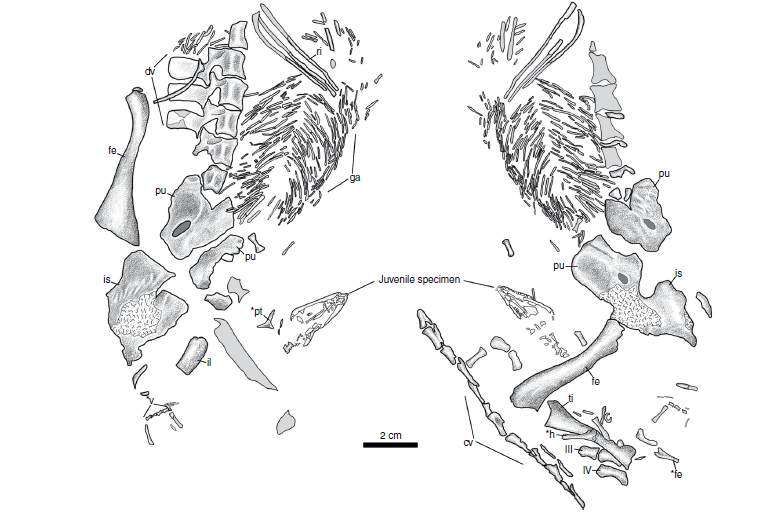Media Release
From: Springer NatureEcology: The earliest known example of extended parental care
The fossil of a previously unknown species of synapsid—animals which resembled modern day monitor lizards—is reported in a paper in Nature Ecology & Evolution. This specimen, around 309 million years old, includes an adult with a related juvenile positioned behind its hindlimb and encircled by its tail, suggesting that extended parental care began 40 million years earlier than previously thought.
Parental care of offspring after birth, also known as extended parental care, is common among many vertebrates today—including birds, reptiles, mammals, fish and amphibians—but is absent in other groups. Previous research suggests that the earliest example of extended parenting is shown in a fossil of the varanopid synapsid Heleosaurus scholtzi from the Permian period (298–251 million years ago) in South Africa. However, tracing the evolution of this behaviour is challenging because it is rare to find evidence of parents and infants preserved together.
Hillary Maddin and colleagues describe an articulated partial skeleton of an adult and juvenile varanopid, named Dendromaia unamakiensis, preserved together in a tree-like stump in Nova Scotia, Canada, from the Carboniferous period. The authors suggest that a concealed area within the stump might have formed the pair’s den in which the parent spent protective, extended time with its offspring.
Interpreting where exactly varanopids like D. unamakiensis fall within the evolutionary tree of animals is a matter for debate. This group has been traditionally categorised as synapsids, mammal ancestors. In a separate paper published this week in Nature Ecology & Evolution, David Ford and Roger Benson suggest that varanopids were not related to mammals, but were part of a reptile group, the diapsids, that eventually gave rise to crocodiles, lizards, snakes, turtles and birds.


